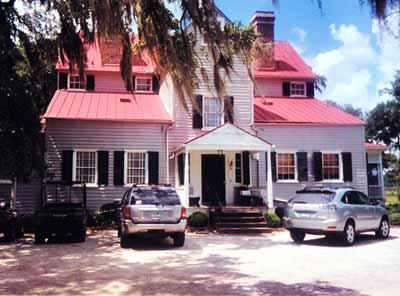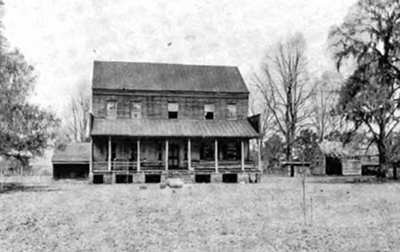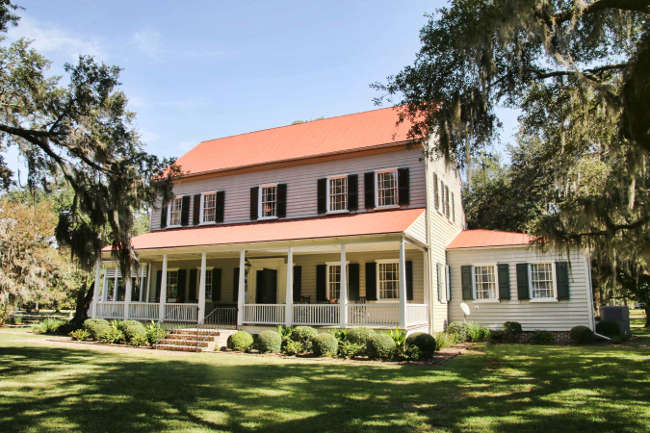Quinby Plantation – Huger – Berkeley County
Basic Information
- Location – Eastern branch of the Cooper River, Huger, St. Thomas and St. Denis Parish, Berkeley County
Located off SC 41 on Cainhoy Road
- Origin of name – It is believed John Ashby named his plantation in honor of his ancestral home, Quenby Hall, in Leicester, England (3) (4, p. 165).
- Other names – Queenbe, Queen Bee, Quenby, Quimby
- Current status – The house was moved to Halidon Hill Plantation in 1954.
Timeline
- 1681 – Earliest known date of existence (4, pp. 164-166)
Land grant of 2,000 acres to John Ashby (4, pp. 164-166)
- ? – Richard and Thomas Shubrick acquired the plantation from the Ashby family (4, p. 165).
- 1781 – A battle during the Revolutionary War occurred at a bridge near the plantation where British forces sought refuge at the plantation. The Shubricks still owned the plantation at this time (4, p. 165) (5).
- 1792 or 1802 – Roger Pinckney purchased the plantation from Thomas Shubrick (1, p. 3) (4, p. 166).
- Circa 1800 – House constructed in the Federalist style (1, p. 2).
The house was constructed for Roger Pinckney or the Shubrick family (1, p. 2)
- 1815 or 1816 – Roger Pinckney sold Quinby to John Ball. Ball had purchased it for his son Isaac (1, p. 3) (4, p. 166).
- 1825 – Isaac Ball passed away leaving Quinby to his daughter Jane Ball who was married to John Gibbes Shoolbred (1, p. 3).
- 1932 – Jane Ball Shoolbred willed the plantation to the six daughters of her brother William James Ball. The sisters still owned the plantation in this year (1, p. 3) (4, p. 167).
- 1950 – The Ball family sold the plantation to lumber company (1, p. 3).
- 1954 – The house had greatly deteriorated and was going to be destroyed. Mr. and Mrs. Thomas Huguenins obtained the house and moved it four miles to Halidon Hill Plantation (1, p. 3).
The property retains the foundation of the house that was moved (2, p. 19).

— Rear of Quinby Plantation house after moved to Halidon Hill Plantation —
— © Brandon Coffey —
(Do Not Use Without Written Consent)
Land
- Number of acres – 2,000 in 1681 (4, p. 166)
- Primary crop – Rice (2, p. 19)
There is a slave cemetery thought to date from the eighteenth century (2, p. 19).
Slaves
- Number of slaves – ?
Buildings
- The house was moved to Halidon Hill Plantation in 1954. Just the house's foundation remains on Quinby Plantation.
References & Resources
- National Register of Historic Places
– Nomination form - PDF - submitted in 1985
– Photographs, architectural overview
- National Register of Historic Places
– Nomination form for Cooper River Historic District - PDF - submitted in 2002
– Photographs, architectural overview
- Information contributed by Wayne Ashby from:
Ashby Ancestry
- John Beaufain Irving, A Day on Cooper River (1842)
(Whitefish, MT: Kessinger Publishing, LLC, 2010)
- Information contributed by Ramona Grimsley, Digital Projects Librarian for Berkeley County Library, from:
Historic Markers Across South Carolina - Quimby Bridge




